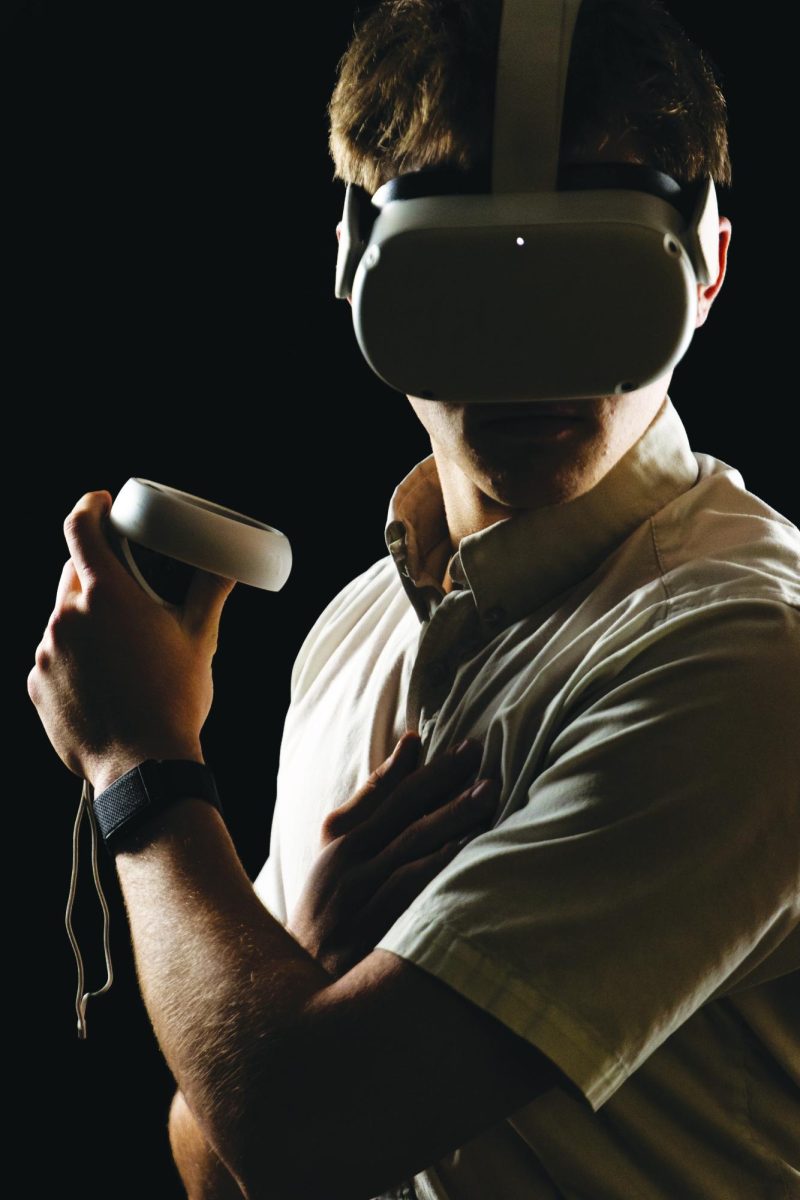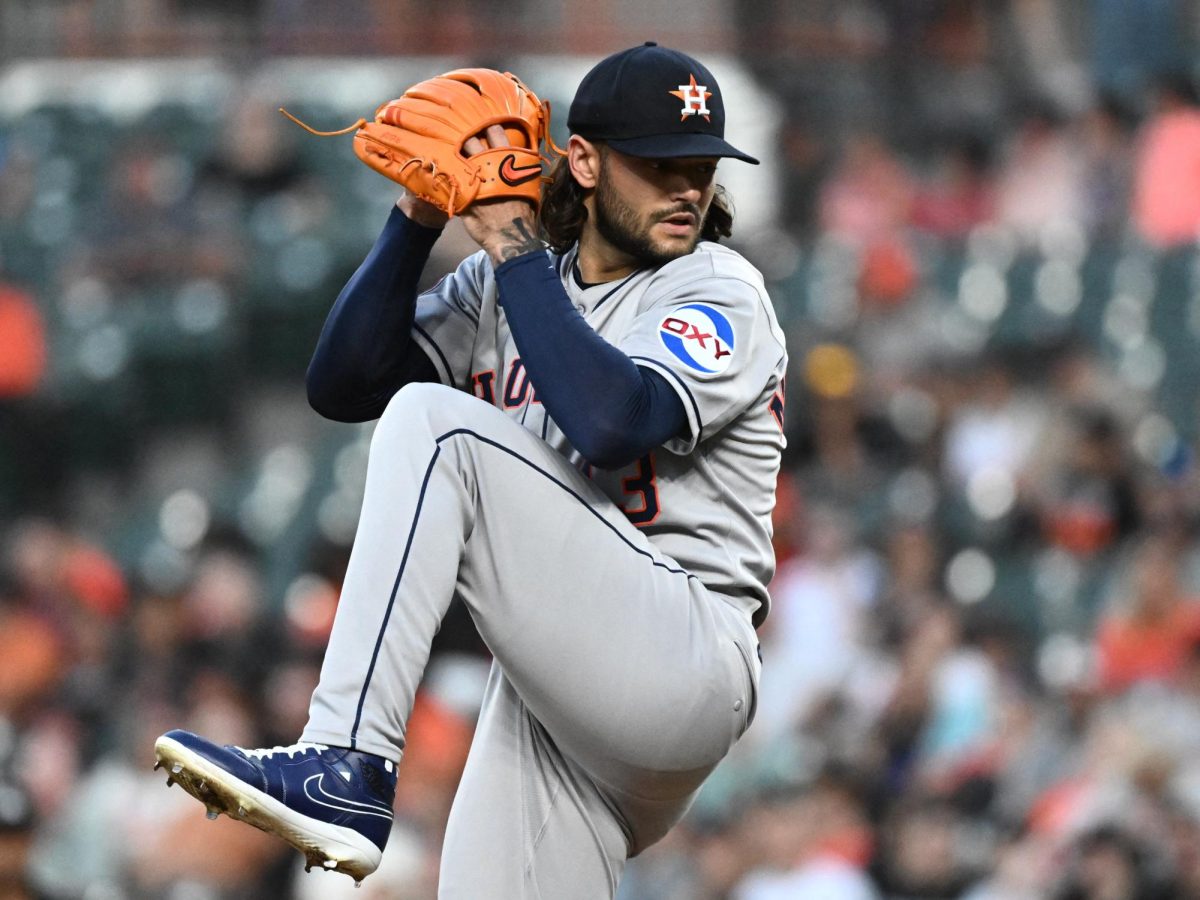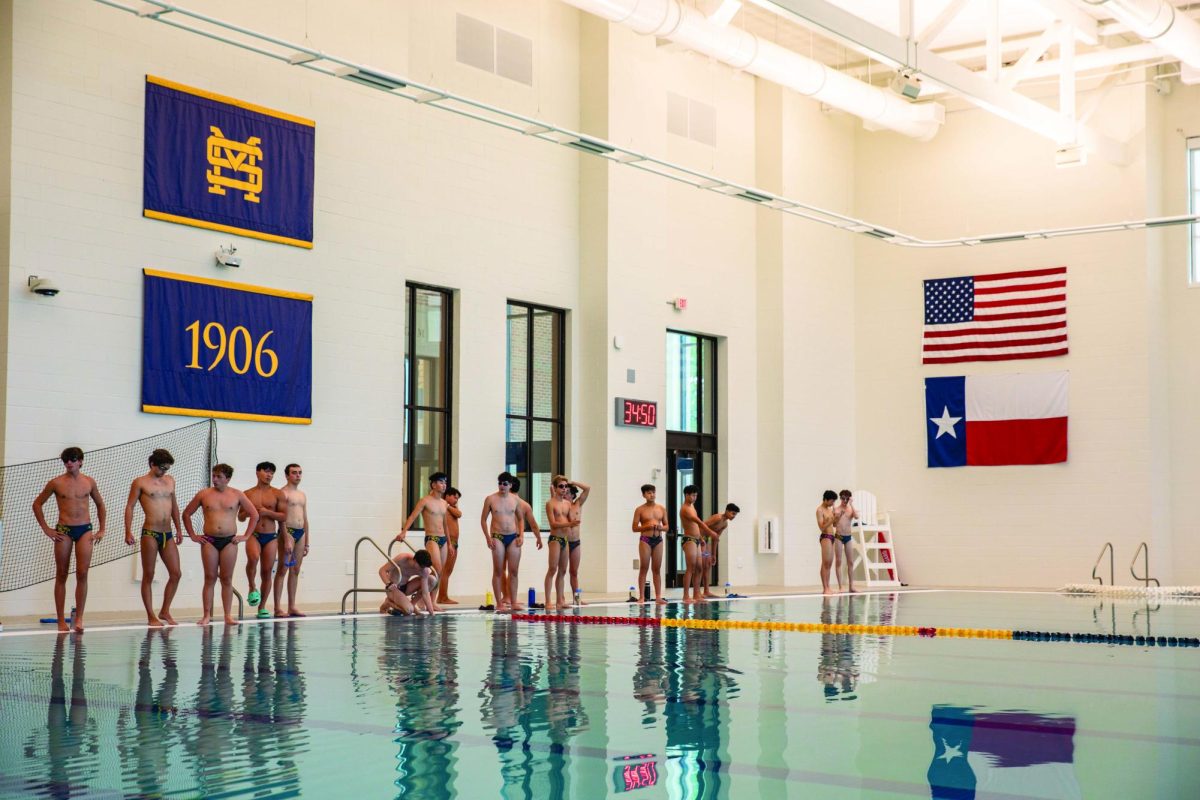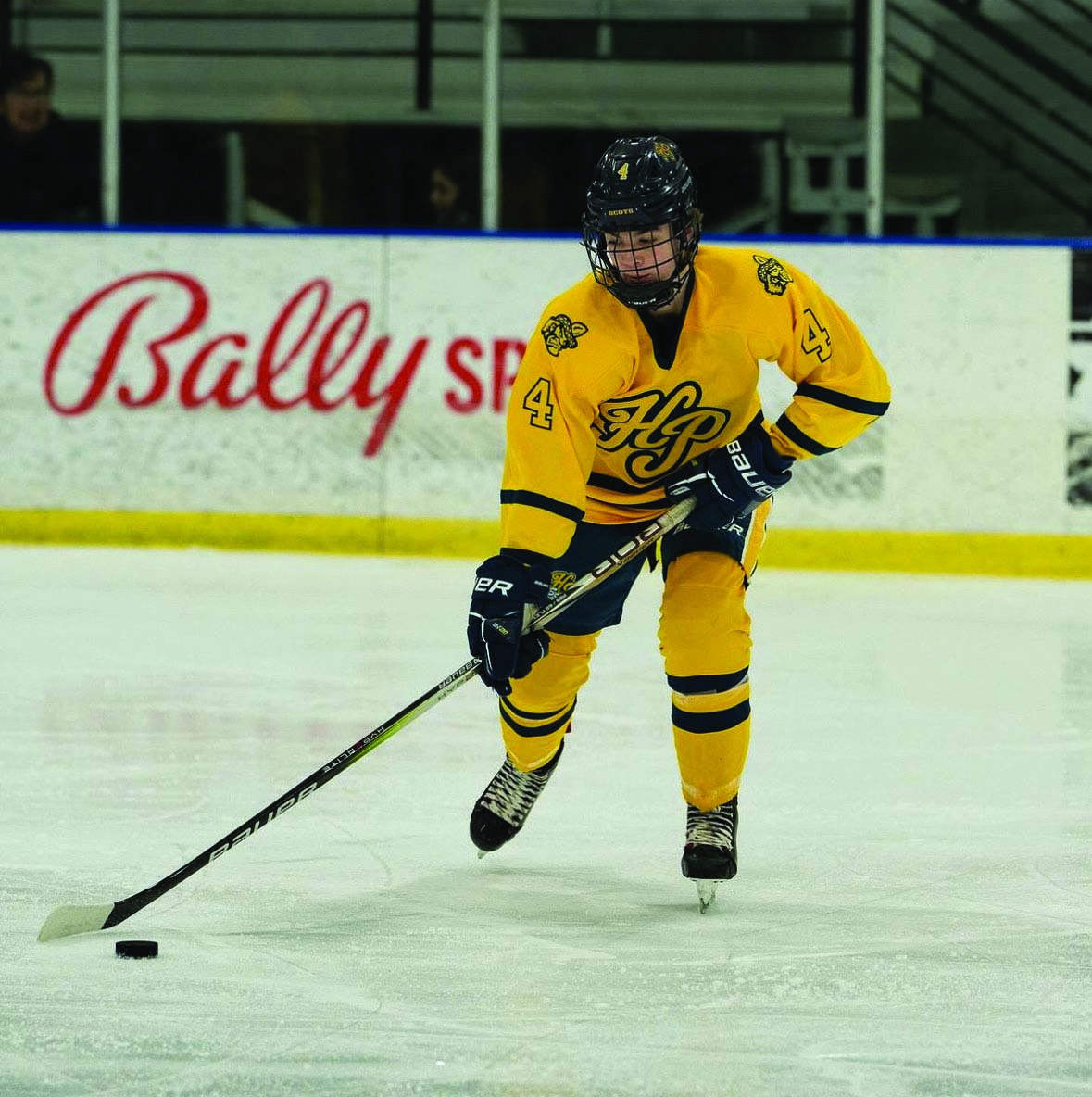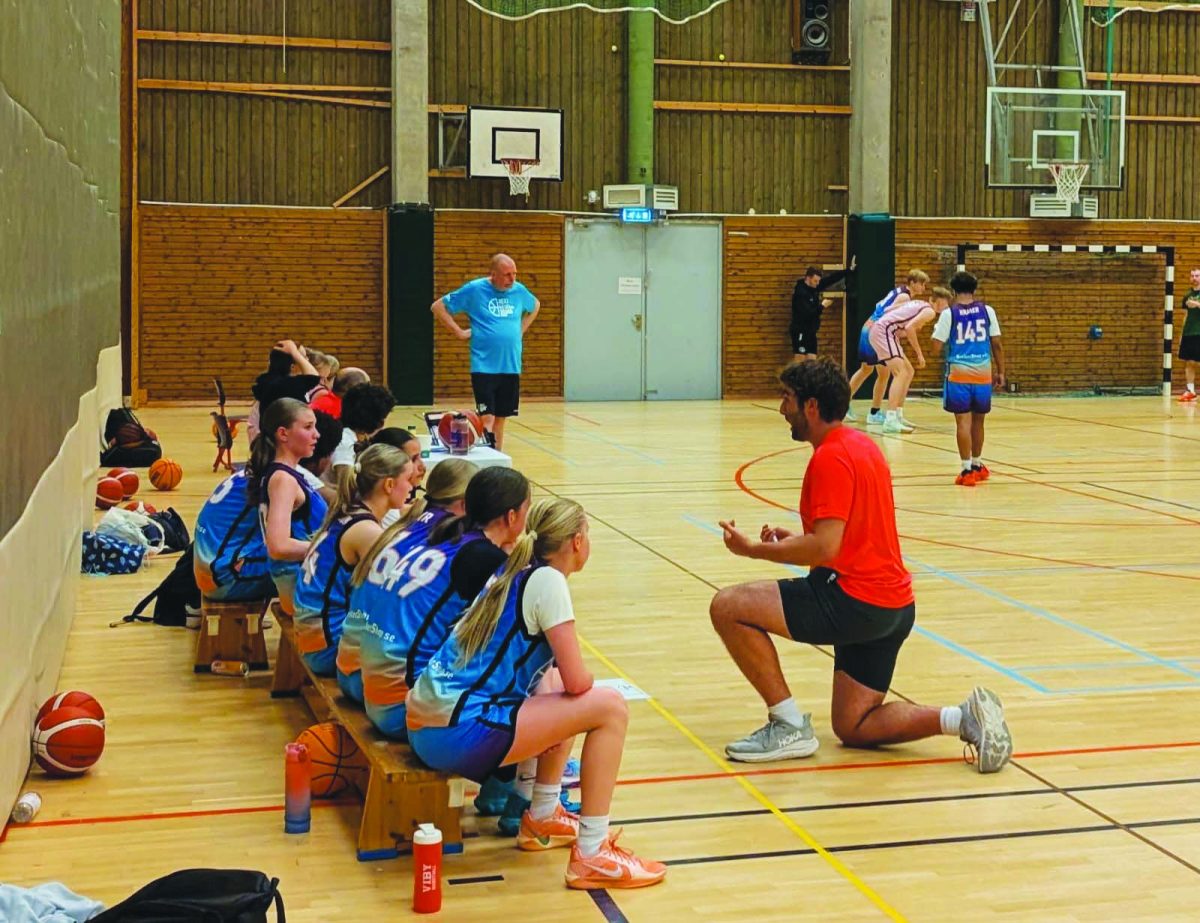Half a second. That’s all the time a batter has to react to a 80 mph fastball. Half a second.
As baseball evolves, pitchers are throwing faster than ever and are developing better techniques to throw batters off of what pitch is coming. It’s only adding difficulty to one of the hardest things to do in sports: hitting a baseball.
With the amount of rest pitchers need between games and the almost non-existent sight of one throwing at 100 percent in a standard practice, batters are being forced to shift their training in another direction.
For junior Hudson DaRosa, a broken hand, which rendered him unable to hit despite a desire to get better, led him to start his journey – one that some amateur and even professional athletes have already begun – in virtual reality.
“I started using it last spring,” DaRosa said. “I just wanted to see what it entailed. I really wasn’t using it that often but now I have more reasons to use it, especially before the season and with my hand injury.”
Using the new WIN Reality app on his VR headset, DaRosa can face real pitchers across all age levels and access a multitude of different drills offered through the app, each tailored to different skills and mechanics.
“What it really helps with is your timing,” DaRosa said. “I can’t hit off of a machine or see real pitches, but being able to keep up timing with pitchers and see pitches come in is super helpful when you can’t actually swing at live balls.”
While standard hitting drills like soft toss or batting practice are helpful, they often fail to replicate a true, gamelike scenario that a batter would face against a real pitcher. Full speed throws and the ability to react to different types of pitches could only ever be seen in a live game.
“There’s a lot of stuff that I can do in VR that I couldn’t do at a facility,” DaRosa said. “The best thing you can do at a facility for timing is a machine, but being able to have virtual pitches is a lot more accurate for my timing. It switches up more and I’m able to work on different pitch types and pitch shapes.”
Along with developing reaction time and the ability to pick up on different pitches earlier, WIN Reality is also seen as a supplementary tool to physical practices.
“You can get a lot more game time reps before and after practice,” junior Jake DeBoever said. “It’s also something that you can use inside if you’re not near a field and you can use it whenever you want regardless of the weather.”
As with many new technologies, WIN Reality does have some issues. For DeBoever, although the app can help improve certain aspects of his game, it is next to impossible to create an exact replica of what batters would see in a real game.
“Although it can help with timing, it’s really hard to create something that even compares to facing a real pitcher in an actual game,” DeBoever said. “There’s a lot of other factors that come into play, like the crowd and other natural aspects that can throw you off, so when it’s just you and a pitcher it doesn’t really feel like a real game at all.”
As well as having issues with portraying natural factors, the app also fails to account for different in-game strategies pitchers will often use to attempt to throw off a hitter.
“Pitchers will obviously mess with their timing during an at bat,” DaRosa said. “It’s generally just the same video of a pitcher with different arm slots. There’s no sidestep or quick pitching, which in game will really throw off your timing.”
In addition to the inability to replicate the nerves and adrenaline a batter can feel when stepping up to the plate and the lack of variation, one of, if not the biggest challenge WIN Reality faces is the lack of confidence some players have with the technology itself.
“The issue I think is holding it back right now is the tracking isn’t accurate enough for it to be viable,” DaRosa said. “I prefer the drills that focus on reading a pitch or predicting where it will land, rather than the actual bat to ball drills themself. If it tells me I got a hit I don’t really believe it.”
Despite having some faults, as WIN Reality and the world of VR sports training begins to improve, the app is still capable of providing players with drills that can contribute to a higher success rate at the plate.
“I definitely think it’s on an upward trend,” DaRosa said. “Being able to work on the mental side of the game, outside of an actual game is a huge advantage if you can utilize it and I don’t see that there’s any downside to getting even better at recognizing pitches or improving my approach to at bats even more.”


